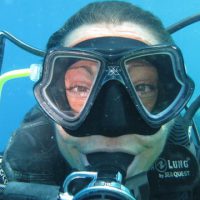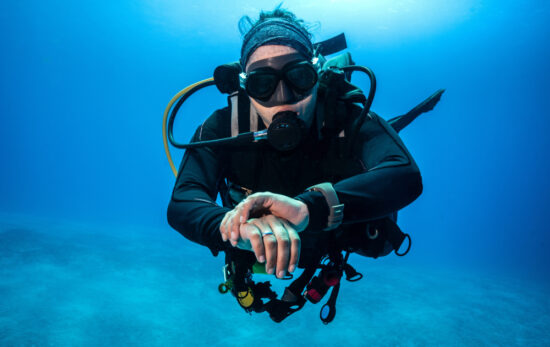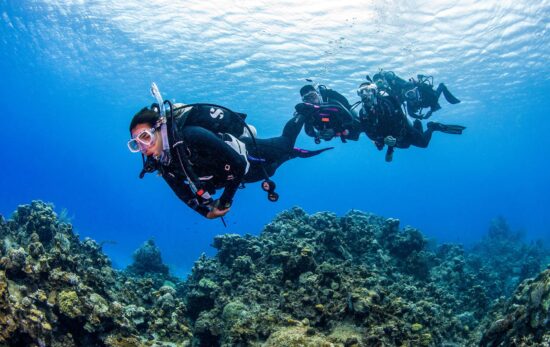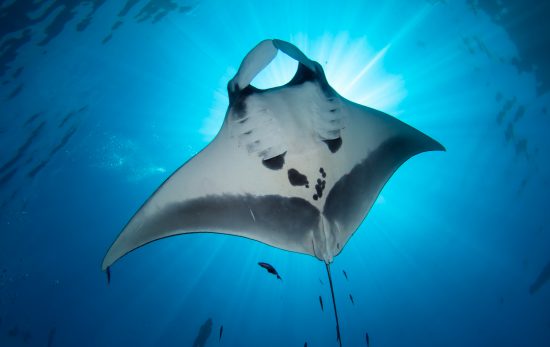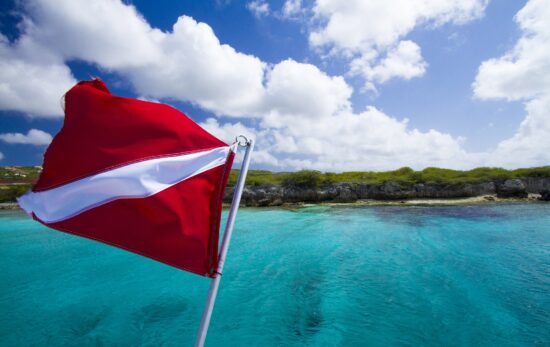Is the ocean your calling? Do you just know that scuba diving will be a part of your life and more than just a hobby? Do you see yourself working in the diving industry? Want to take more PADI courses? Consider the journey from PADI beginner to pro for a fulfilling career in diving.
If you answered yes to any of the above, it’s time to start your journey from Beginner to Pro and become a PADI Instructor!
In this blog, we take a look at how to go from being a beginner to living out your dreams as a PADI Open Water Scuba Instructor!
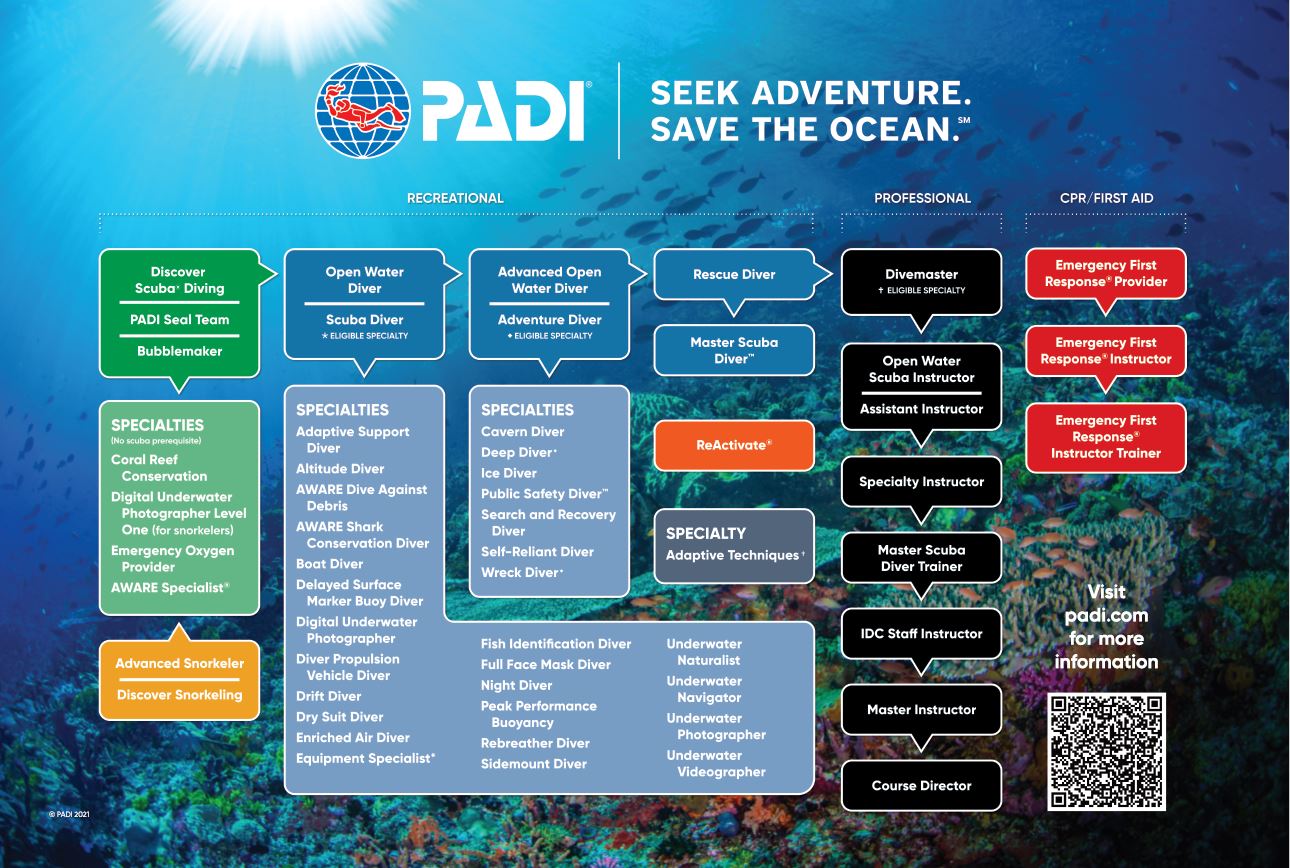
The PADI System of Recreational Diver Education
PADI courses are progressive, a bit like building blocks. They must be taken in order; one course leads to the next. The path to becoming an Instructor starts by first becoming a PADI Certified Diver. Once you have completed one level of recreational certification, you can immediately move on to the next. Let’s take a look at the sequence of recreational certifications…

PADI Open Water Diver Course
The first level of certification is the PADI Open Water Diver Course. It’s probably the most important course you’ll ever. This is the foundation of knowledge and skills you will build as you progress through subsequent PADI courses.
Once you are certified as an Open Water Diver, you’ll be able to dive in conditions similar to those in which you trained with another certified diver. You can immediately start the PADI Open Water Diver Course with PADI’s eLearning.
PADI Advanced Open Water Diver Course
Once you have completed your open water course, you can immediately take the PADI Advanced Open Water Diver course. Don’t let the name of the course put you off . You do not need to be advanced to take the course. The course is about advancing the skills and knowledge you learned in your Open Water Diver Course. You’ll also have the opportunity to try out different types of diving. Maybe wreck diving, night diving, drift diving or dry suit diving.
Under the guidance of your instructor, you’ll complete five Adventure Dives, including a navigation dive and a deep dive. Upon completion, you’ll be trained to dive to a maximum depth of 30 meters/100 feet.
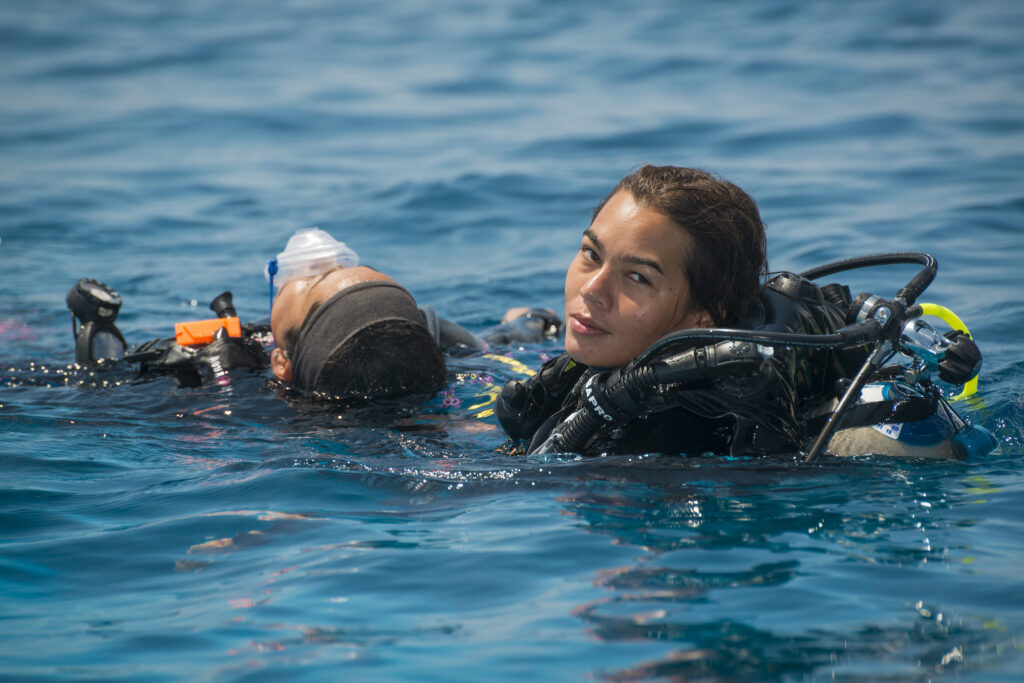
PADI Rescue Diver
If the Open Water Diver course is one of the most important, the Rescue Diver course is among the most rewarding. With your existing skills and knowledge solidified, it’s time to turn your attention to responding to emergencies and helping others.
The Rescue Diver Course is not just about dealing with situations when they happen. There is also a heavy focus on how to prevent incidents from occurring in the first place. You’ll also need to take the Emergency First Response (EFR) Primary and Secondary Care course to complete your Rescue Diver certification.
The EFR course includes two key modules, first aid, and CPR. You’ll use the skills you learn in your EFR course during specific components of your Rescue Diver course. It’s an incredibly rewarding experience that culminates in you taking part in a search and rescue scenario!
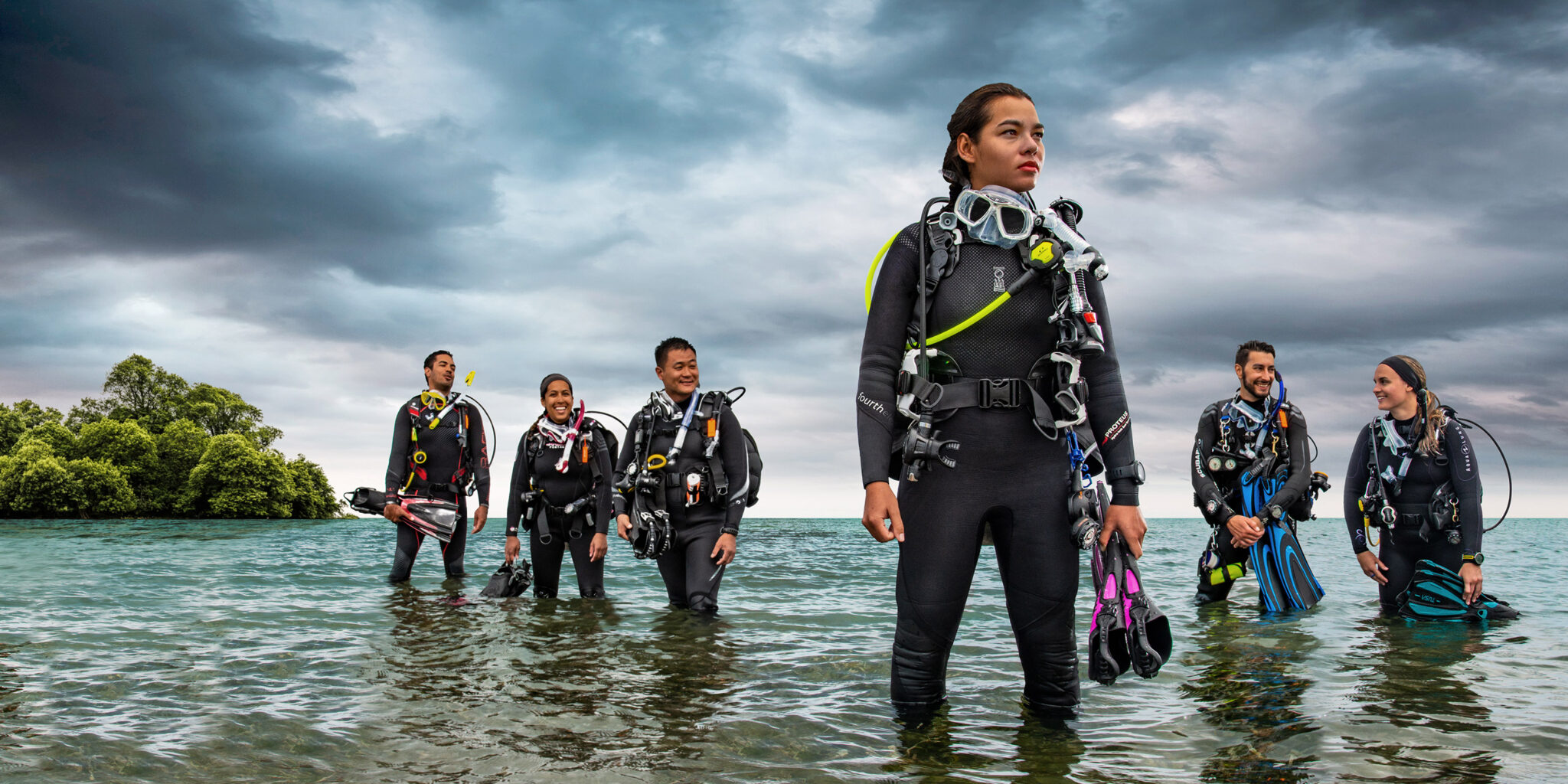
PADI Professional Courses
Once you have achieved PADI Rescue Diver status, you are ready to embark on PADI’s professional-level courses. You are now on your way to an incredible lifestyle and your dream job as a PADI Pro!
PADI Divemaster
The PADI Divemaster certification is the first level of professional certification. As a certified PADI Divemaster, you can work in the dive industry or coordinate dive expeditions of your own.
Divemasters who are working in the industry often assist instructors with courses and student divers, as well as guide certified divers on dives. Your responsibilities also include filling tanks, loading guests’ gear onto boats, setting up equipment for customers, checking in divers, giving boat and dive site briefings, and ensuring customers are well-informed, safe, and happy.
Additionally, PADI Divemasters can carry out the following roles:
- Assist PADI Instructors with training and non-training diving activities
- Lead Discover Local Diving programs
- Accompany certified PADI Scuba Divers and Open Water Divers on dives
- Assist PADI Instructors with Discover Scuba Diving (DSD) programs
- Help divers refresh their skills with the PADI ReActivate program
- Teach Discover Snorkeling and PADI Advanced Snorkeler
To progress from PADI Rescue Diver to PADI Divemaster, there are some additional requirements. Firstly, you’ll need to be 18 years old and have at least 40 logged dives when beginning the program. Your EFR certification will need to be dated within the last 24 months, and you’ll need an up-to-date diving medical.
The PADI Divemaster course can be completed over a couple of weeks or as a longer internship. This can give you more insight into the inner workings of a dive center and dealing with customers.
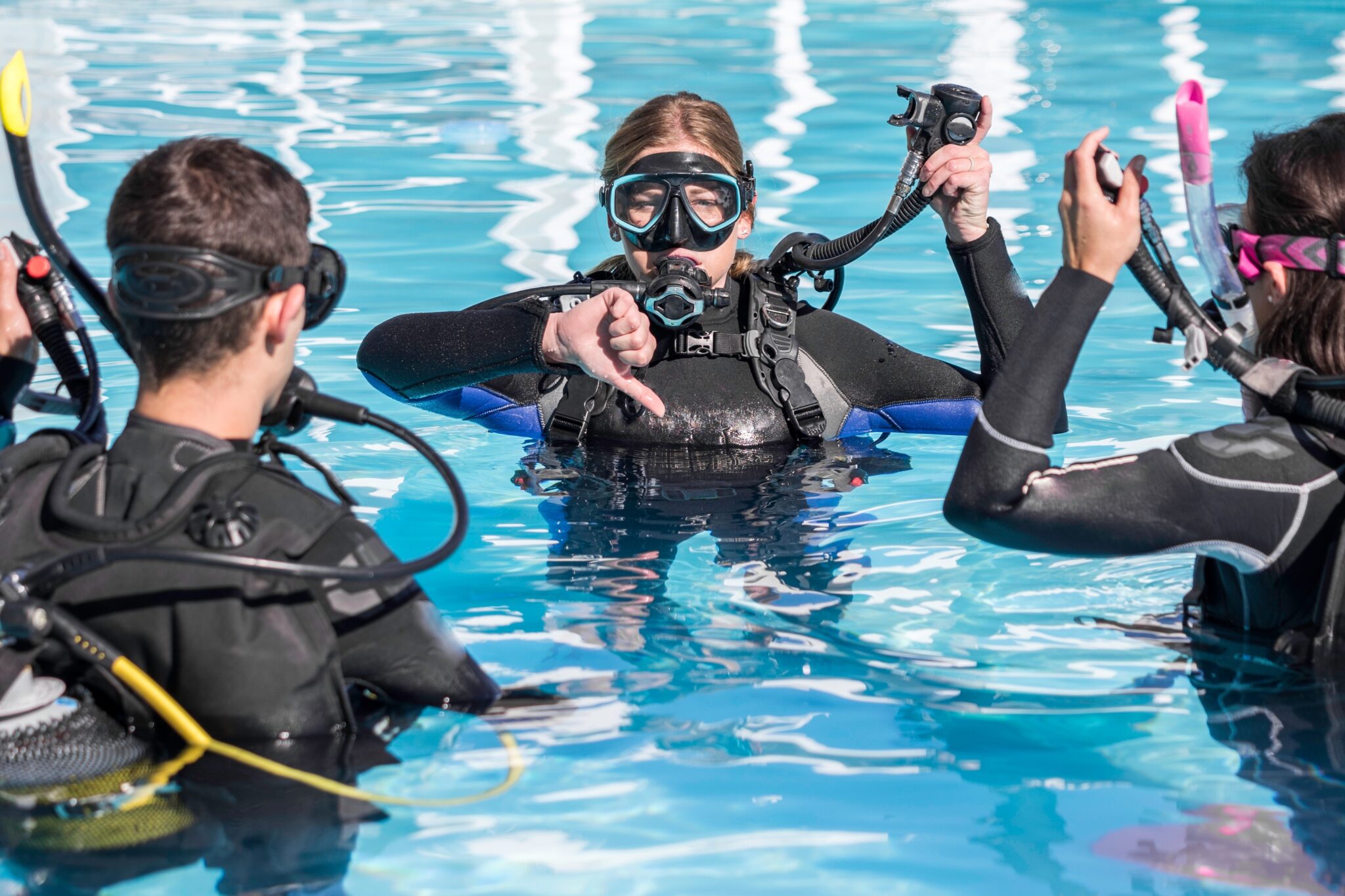
PADI Open Water Scuba Instructor
Finally, it’s time to step into the role of a PADI Instructor! The PADI Instructor rating is the most sought-after by employers in the diving industry. As a PADI Instructor, you can teach and certify PADI Open Water Divers, Advanced Open Water Divers, Rescue Divers, and PADI Divemasters.
Progressing from PADI Divemaster to PADI Instructor means taking the PADI Instructor Development Course (IDC). The IDC is a training program for Instructors, and you’ll need to meet the following prerequisites:
- Be at least 18 years old and a certified diver for at least six months
- Hold a PADI Divemaster certification (or qualifying certification)
- Have at least 60 logged dives to start the IDC and 100 logged dives to receive instructor-level certification
- Hold a current CPR and First Aid course completion*
- Have an in-date medical approval to scuba dive
* IDC candidates must have completed (within the last 24 months) an Emergency First Response (EFR) course or qualifying course. EFR Instructor certification is required before you can start teaching.
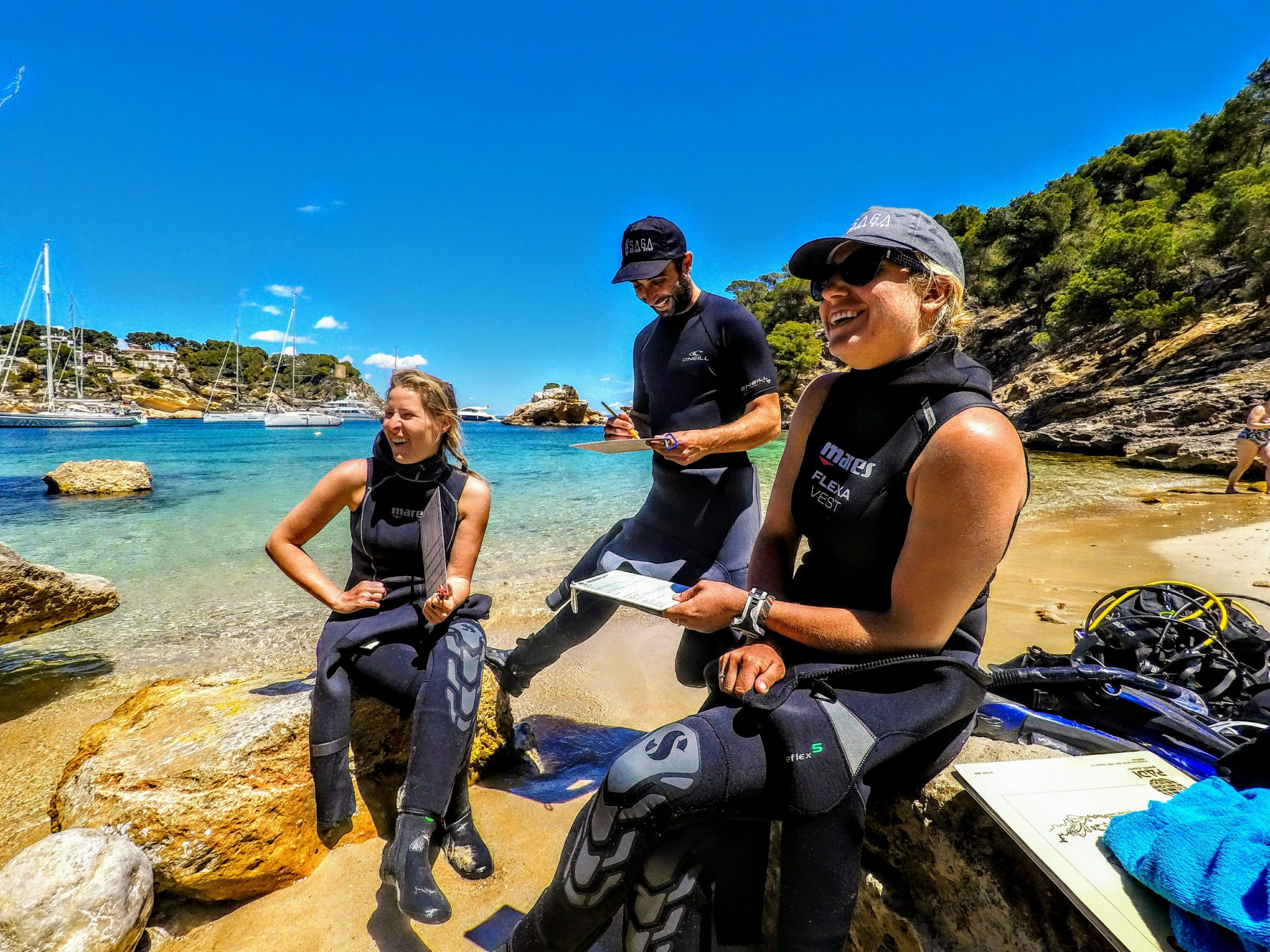
What is an IDC?
The PADI IDC comprises two major components, the PADI Assistant Instructor (AI) course and the PADI Open Water Scuba Instructor (OWSI) program. These can be completed individually, but most commonly, they are taken together and described as the full IDC, or Instructor Development Course.
The IDC aims to develop you as an instructor – to provide you with the tools you need to effectively teach and execute PADI courses to your students. As a PADI Divemaster, you will already have excellent diving skills and a depth of knowledge. In the IDC, you’ll learn how to share your knowledge and skills with others.
The PADI IDC will teach you how to:
- Give classroom presentations
- Work with students in confined water (a pool or pool-like environment), maintaining safety and achieving mastery.
- Introduce students to diving in open water whilst maintaining safety and achieving mastery.
- PADI’s 4E philosophy
- Risk management
- How to market yourself as an Instructor – this is a business, after all!
Upon completing your IDC, you’ll need to take a PADI Instructor Examination (PADI IE). Although it’s an examination, it’s more of a check to ensure that you have understood and can deliver what you learned during your IDC. There won’t be anything new or surprises – it’s nothing to fear and can be great fun! This is the last step on your journey from Beginner to Pro.
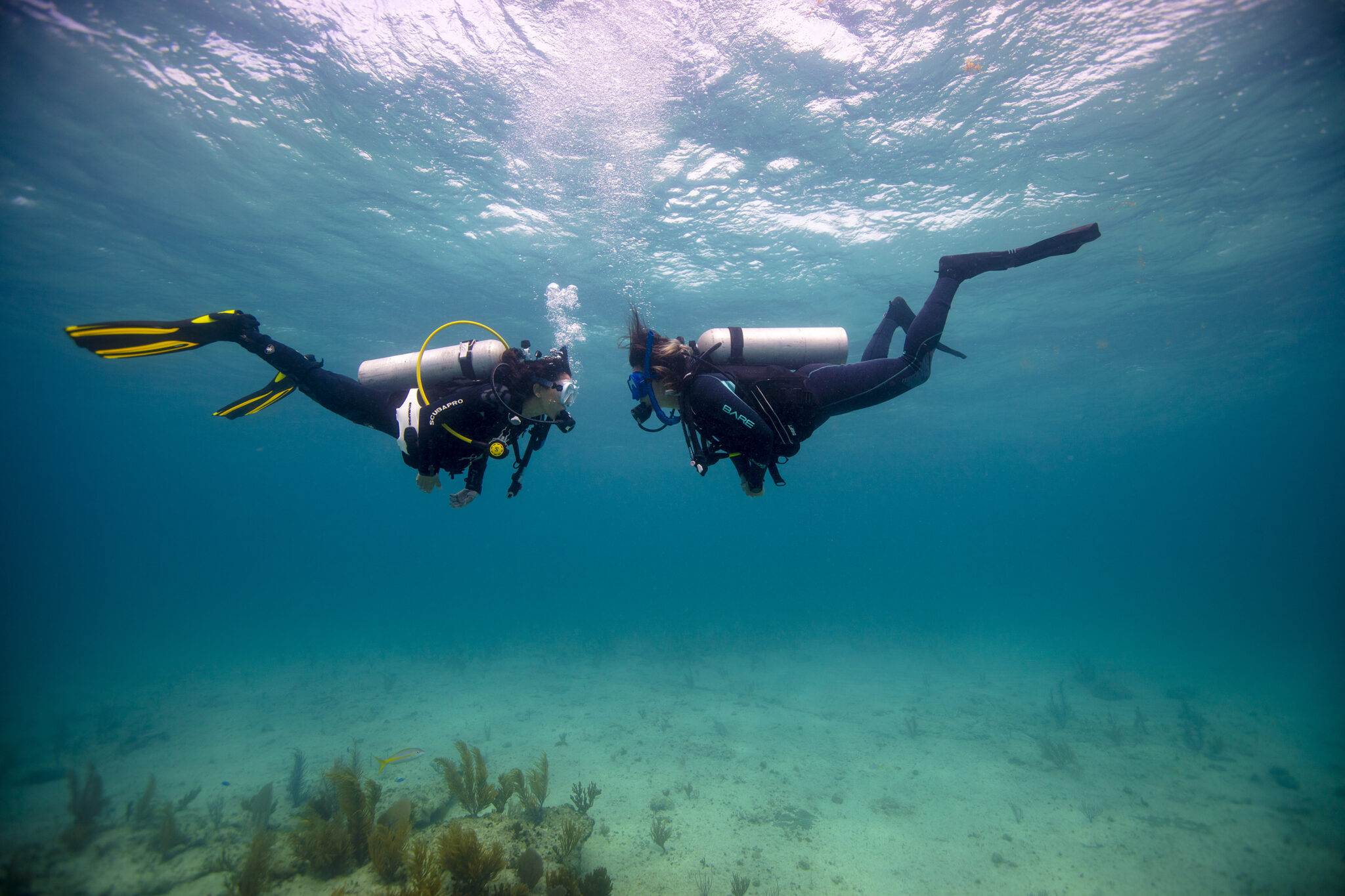
How does Beginner to Pro work?
Some dive centers offer Beginner to Pro programs which take you from PADI Open Water Diver through to Instructor in one go. It will take a minimum of 6 months to meet the pre-requisites of the IDC, but there are some great advantages. You will be diving consistently for a 6 month period, which means your skills will be well-honed by the time you reach the IE. Consequently you’ll also be spending this time in a working diving environment which gives you a huge insight into what is next to come.
You’ll have plenty of opportunities to watch Instructors in action and to get involved with PADI courses and dive trips. You’ll dive with divers of all levels and gain real-life hands-on experience.
Living the Dream: The Lifestyle of a PADI Pro
Becoming a PADI Pro is more than just earning a certification—it’s embracing a lifestyle filled with adventure, travel, and an ever-deepening connection with the ocean. As a PADI Instructor, your “office” is the underwater world, where every day brings new experiences, challenges, and rewards.
Travel the World
One of the most compelling aspects of the PADI Pro lifestyle? The opportunity to work in some of the world’s most stunning and diverse locations. Imagine spending your days diving the vibrant coral reefs of Thailand’s Koh Tao. How about guiding divers through the crystal-clear waters of Bali? Or maybe you will be exploring the vast marine biodiversity of Australia’s Great Barrier Reef. Each destination not only offers unique diving experiences but also introduces you to different cultures, cuisines, and local traditions, adding a rich cultural dimension to your career.
The flexibility of being a PADI Pro allows you to travel the world while working in locations. Like Mexico’s Riviera Maya, known for its incredible cenote dives, or Malta, where you can dive into history exploring its numerous wrecks. Whether you choose to settle in one place or move from destination to destination, the choice is yours. This globetrotting lifestyle lets you continually learn and grow as a diver, as each new environment presents fresh challenges and learning opportunities.
Connections and Conservation
The PADI Pro lifestyle isn’t just about travel; it’s about the connections you make along the way. Teaching diving is incredibly rewarding as you guide students from their first breaths underwater to becoming confident, skilled divers. You’re not just imparting knowledge—you’re igniting a passion for the ocean and creating lifelong ambassadors for marine conservation.
The role demands adaptability, leadership, and a deep understanding of marine ecosystems. All of this can enrich your life both in and out of the water. Whether you’re teaching a nervous first-timer or leading an advanced wreck dive, the challenges you face help you grow as a person and a professional. If you’re ready to transform your passion into a fulfilling career, the PADI Pro journey awaits you. What are you waiting for?
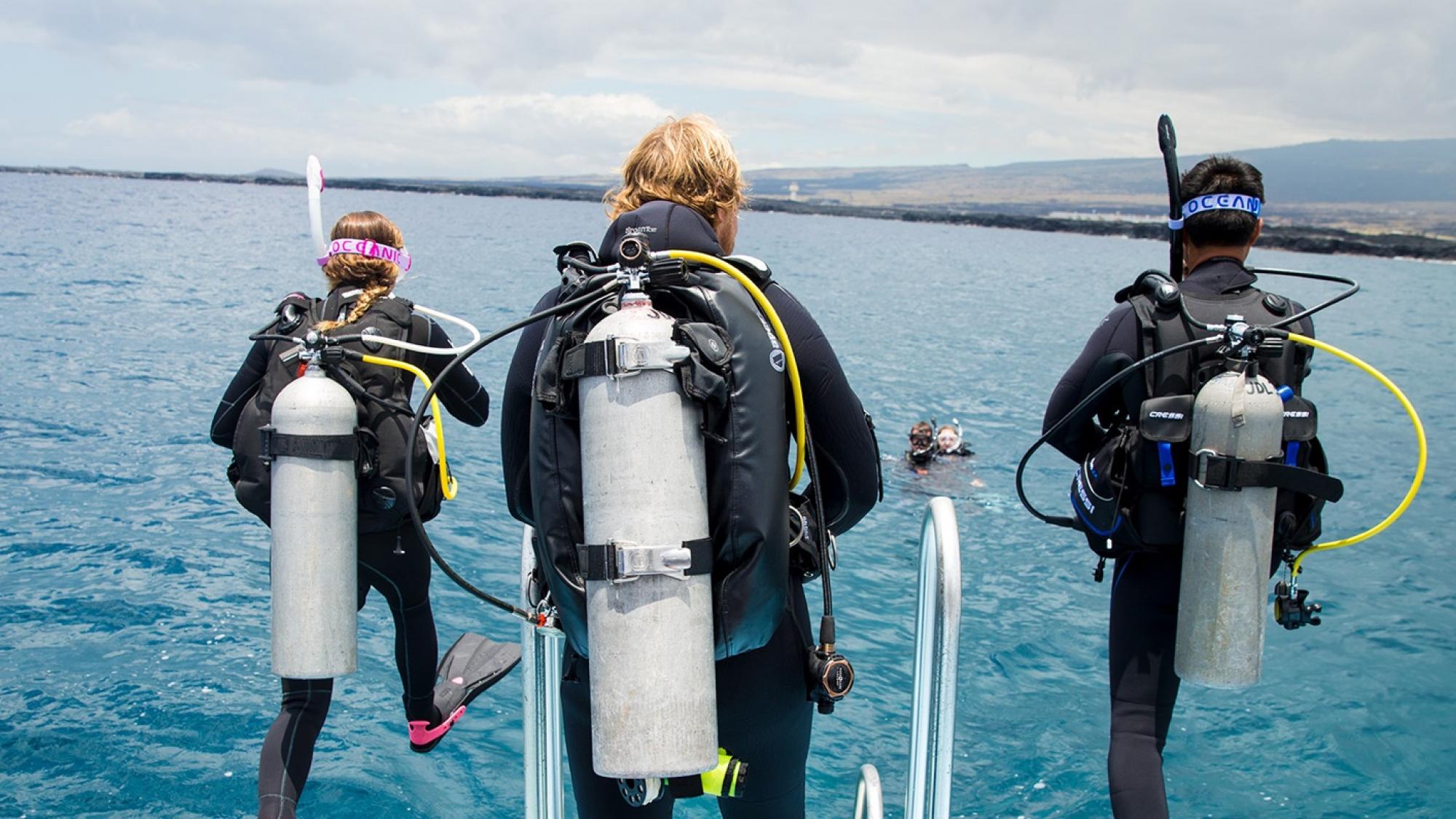
Are you ready to take the leap and go from Beginner all the way to Pro? Learn more about choosing the best place to do your IDC here and check the link below to find a Beginner to Pro program in your favorite location!
